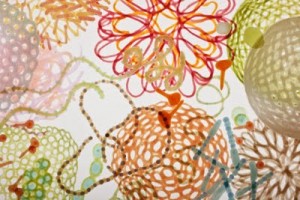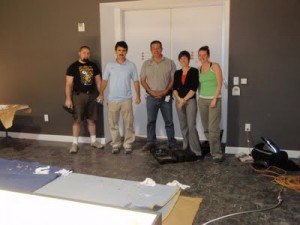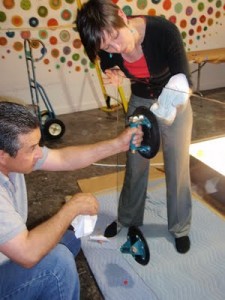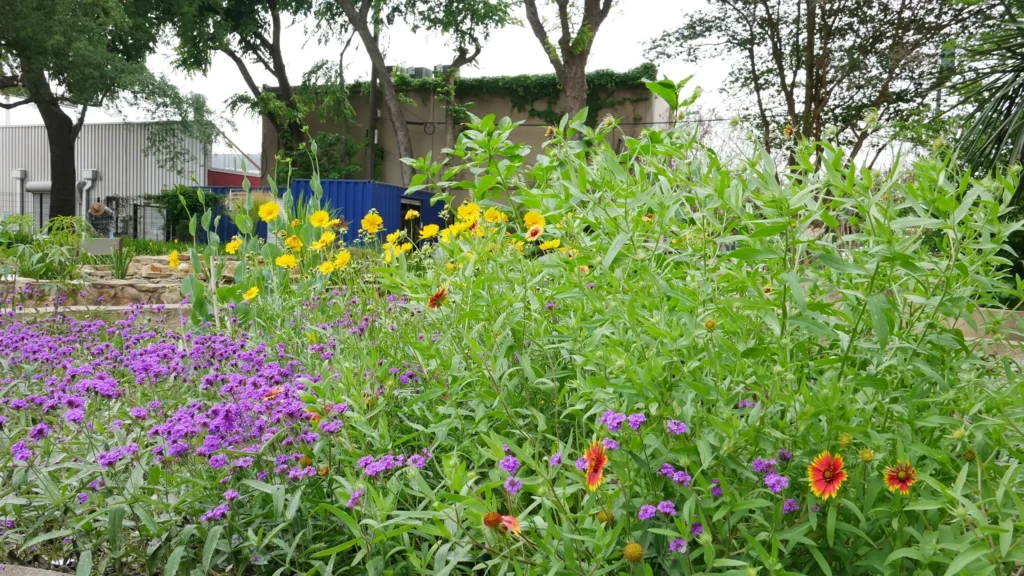Michelle Samour’s show, Truth and Transience, is comprised of three parts. The pieces Eyes of God: Conversations about Science and Faith and Bundle are both wall installations. The third piece in the exhibit, Reflecting Pools: Beautiful Viruses, is a 10-by-3.5-foot light box that sits on the floor in the middle of the gallery radiating fluorescent light. The light box was constructed specifically for this installation and is filled with bright hand-made paper shapes the artist calls viruses.
The imagery Samour uses to create her viruses is from actual diseases such as SARS, Smallpox, Ebola, Avian and AIDS. She has created a self-contained aquatic garden of viruses that invites the viewer to contemplate the heavy issues that surround disease and medicine in our contemporary society—such as efforts to control the spread of disease; the control of mass hysteria; the creation of vaccinations; and the political, social and economic factors that surround development of vaccines.

Samour makes these viruses out of abaca, a fiber found from the banana tree. She mixes the abaca fibers with water and macerates them in a machine called a beater until it resembles a fluid paste. The fluid paste or slurry is then colored with light, fast pigments. The shapes that are floating in Reflecting Pools: Beautiful Viruses are drawn using a squeeze bottle. The slurry is simply squeezed out of the bottle into various shapes, pressed and then dried.
These vibrant and beautifully translucent papers were carefully distributed and organized on a layer of milk plexi-glass and then glass. Samour first worked slowly and purposefully, positioning the viruses on the layer of milk plexi-glass. After the works were in place, the next step of the installation was inserting the sheet of glass on top of one layer of plexi-glass and abaca. Unloading the glass and carrying it into the gallery was an arduous task and required the strength of three men: Alfonso Cipriano, head carpenter at MFAH; his supervisor; and Randall Dorn, Facilities and Operations Manager at HCCC.

Once the glass was in the gallery, all of us, including Michelle Samour, Curator Anna Walker and myself, cleaned the surface of the glass. We made sure to remove any and all smudges, dirt, fingerprints, etc., so that this labor-intensive task of lowering the glass down into the box only had to happen once. Handles with giant suction cups were attached to one side of the glass, and the rest of us stood back, held our breath and watched as the glass was lifted and then slowly lowered into the light box. Once that was in place Samour added another layer of abaca viruses. The two layers provide a sense of depth to the light box and it takes on the appearance of a pool of water containing floating microscopic agents, reminiscent of what would be seen if these viruses were viewed under a microscope. I think a sense of relief washed over all of us after this part of the show had been safely put together, and the exhibition was two thirds of the way complete.

Ashley Powell, Curatorial Assistant

